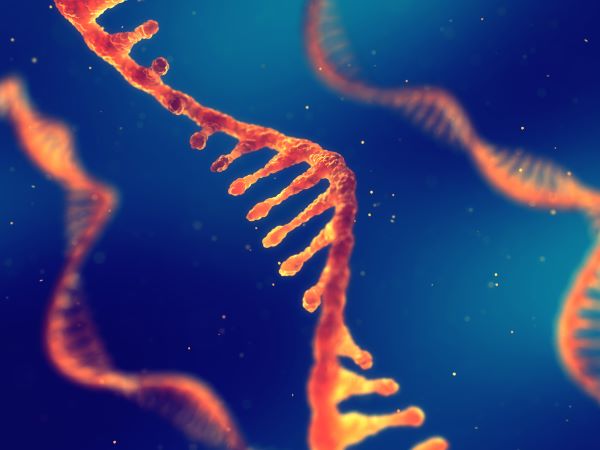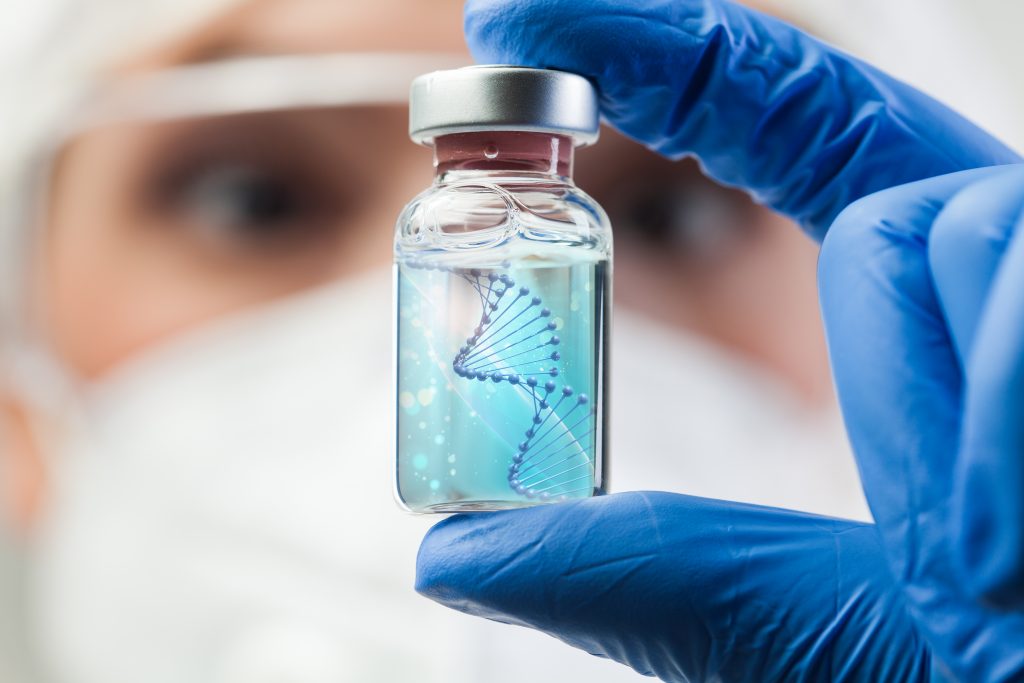The rise and rise of RNA
There aren’t many positives to come from COVID-19, but it may have indirectly brought on a medical revolution.
During the pandemic, the use of RNA in medicines and therapies has been brought into the spotlight because two of the main COVID vaccines, the Pfizer and Moderna vaccines, use RNA.
RNA has been scientifically known for a century. It is copied from DNA – like an imprint of part of it. Different kinds of RNA carry out different functions, including specifying proteins, conveying messages, organising body development and brain function, intercepting other RNA, and switching genes on and off.
Compared to many other drug-developing tools and techniques, RNA strands can be ‘hacked’, manufactured and delivered to the body very rapidly. Their potential beneficial uses in medicine are numerous, according to NSW researchers who have been studying RNA for years.

“I believe this is the next medical revolution,” says Professor Pall Thordarson, Director of the RNA Institute at the University of New South Wales (UNSW). “One of the real advantages of RNA therapies is that they are relatively rapid to develop and relatively easy to scale up. The developers of Pfizer and Moderna had the genetic material for COVID in January 2020 and two months later they were doing human trials. They started animal trials within four weeks.”
“They’d produced the vaccine within 48 hours of the gene sequence being determined,” says John Mattick, SHARP Professor of RNA Biology at UNSW. “But there’s a much bigger story than vaccines, as important as they are. I think the big news is that the same approach has been successfully used to treat autoimmune disease. It can be modified to retune the immune system to tackle autoimmune diseases like arthritis, type 2 diabetes, Crohn’s disease, multiple sclerosis, the list goes on and on. It’s huge.”
Scientists across Australia and the world are now focusing on many of these other applications for RNA therapies. Thordarson and Mattick are part of a new NSW RNA Production and Research Network that aims to develop and support manufacturing of RNA-based medicines to treat COVID, liver disease and other diseases. It will pull together existing research, development and analysis capabilities in NSW, so that new drugs can be developed for use in trials.
Mattick says that UNSW is one of the top 10 organisations in the world at the forefront of RNA research and he, personally, has worked in the field for three decades.
“It’s been a bit of a slow burn,” he says. “People have always seen RNA as just an intermediate between DNA and proteins, but it turns out RNA is a critical component. Most of the RNA produced in humans does not specify proteins, but controls our development and has a major role in the workings of the brain.”
In many traditional vaccines, a protein derived from a virus, or a disabled form of the whole virus, is introduced to the body. The body then creates an immune response against the virus. In the RNA vaccines, RNA strands are introduced that have the coding for part of the virus – almost like pretending the virus is there – which also creates the immune response.
In order for these vaccines to work, the temporary messenger RNA has to be smuggled into the cells so that the body doesn’t attack and destroy it before the important cargo can be unloaded and the message delivered. This requires modification of the RNA to evade the body’s first line defences against foreign RNA.

Professor Thordarson is one of many scientists who for years have worked on nanomolecules, such as lipids, that can carry the RNA into the cells safely. It was because of this pre-existing research that COVID vaccines using RNA could be developed so fast. “They were primed to do this when 2020 came along,” he says. “It was all ready to go and then when COVID hit, they just ran with it.”
Thordarson says that some people’s fears that the RNA therapies could potentially affect their DNA are misguided. “It’s natural for people to think, ‘RNA/DNA, this is genetic modification,’ but it’s very different,” he says. RNA has a short life before it is recycled into nutrients for the cell. Depending on its function, it could last minutes, or days at the most. It is located in a different part of the cell to the DNA, and the odds that it could be copied back into DNA are infinitesimally small.
Mattick says that the messenger RNA (known as mRNA), which tells the body to make proteins, makes up only 2% of the RNA that we have. The other 98% was considered ‘junk’ for many years, but is now known to be vital for brain and body development.
One of the ways in which RNA controls development is through interfering RNA (known as RNAi), which can knock out other RNA. This has great potential in medical conditions where RNA is perturbed.
“These are fantastic potential drugs – the big problem is still delivery,” Mattick says. Although some parts of the body, such as the liver, are highly receptive to taking up RNA through the circulation, other parts, such as the brain, are harder to access.
Thordarson says that because RNA therapies are relatively quick to produce, they could be used to keep up with changing viruses (such as the flu or COVID), or personalise drugs, such as cancer treatments.
“Take someone who has been diagnosed with cancer – you can analyse their cells and make the mRNA to stimulate the immune system to attack that cancer. With mRNA we could make them on site within a couple of weeks and give it to the patient.”
He explains that the new NSW RNA Production and Research Network has three pilot projects. The first is to use synthetically produced RNA in antiviral therapy. The second is to bring together experts on lung delivery systems, so that some RNA treatments might be able to be administered by puffer, for example, rather than by injection. And the third is aimed at curing genetic disorders.
“There’s certainly a whole world of RNA disease therapy that will open up,” says Mattick.
Updated 3 years ago